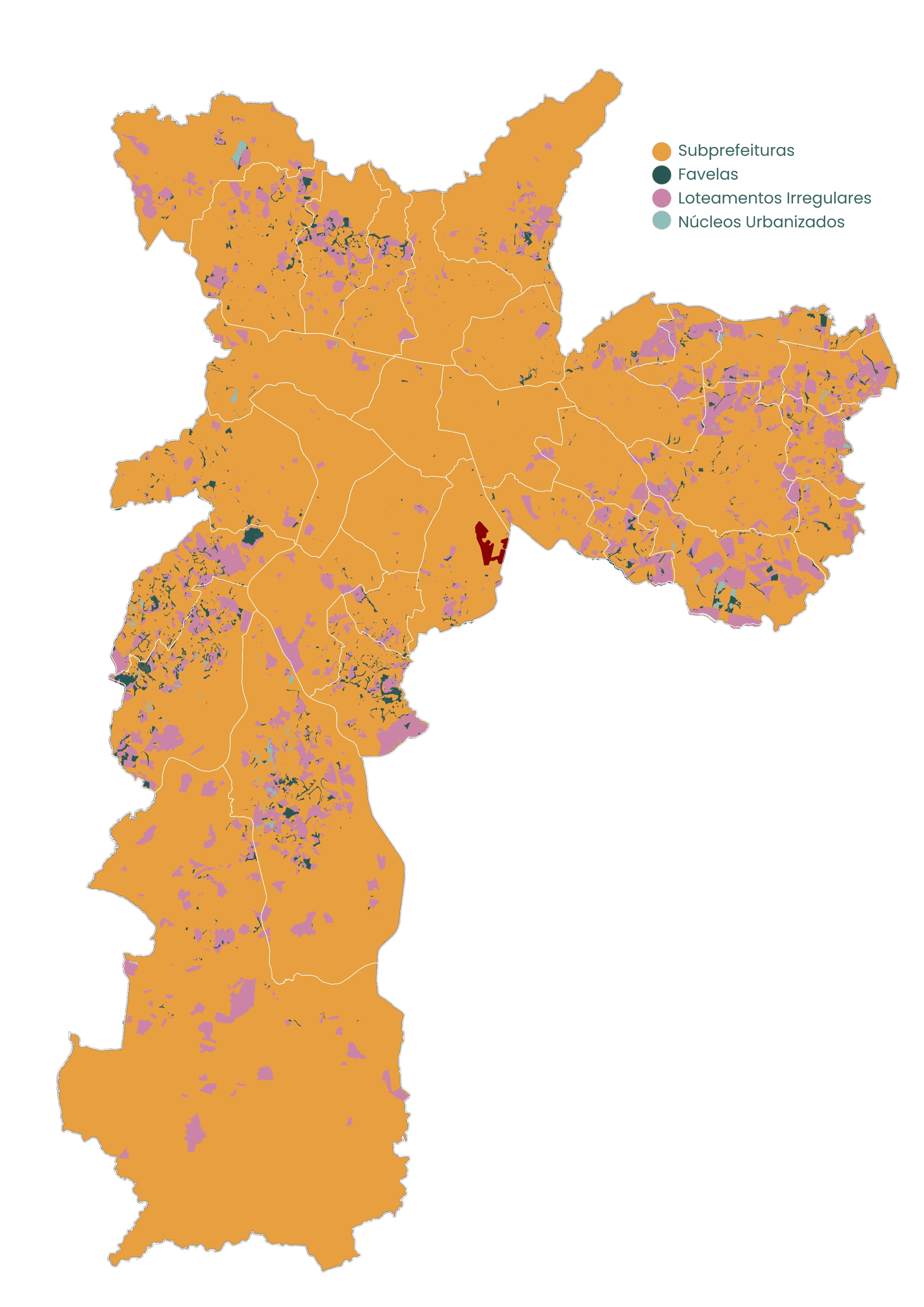Sao Paulo, Brazil
Sao Paulo is the capital of the state of Sao Paulo. It is the largest city in Brazil and also in Latin America. The municipality is divided into 32 subprefectures, decentralized political and administrative management units, which administer 96 districts.

Heliópolis
According to the records of the Municipal Housing Department of Sao Paulo City Hall, they are generally formed by the combination or juxtaposition of favelas, upgraded areas, irregular allotments and tenements. Tenements, precarious collective rental housing concentrated in central areas of the city, are not subject to the same upgrading and land regularization policies as the other types.
It is estimated that about 9.4% of the 4.9 million households in the municipality of Sao Paulo (IBGE, 2022) are located in favelas and upgraded areas. The growth of these neighborhoods occurred mainly in the 1970s and 1980s.
The favelas are spontaneous occupations that take place in a disorderly manner, without prior definition of plots and streets, in public or private areas owned by third parties, with inadequate infrastructure networks, where dwellings, mostly self-built and with a high degree of precariousness, are occupied by low-income families in situations of vulnerability.
- 1.747 favelas registered by the Secretariat
- 399.458 households in favelas estimated by the Secretariat
The upgraded areas are former favelas equipped with infrastructure such as water, sewerage, public lighting, drainage and garbage collection, made possible by actions of public authorities or not. However, they have not yet been legally regularized.
- 438 upgraded areas
- 60.638 families in upgraded areas
Irregular allotments are those created on the initiative of a developer and/or commercialization agent without prior authorization from the competent public bodies, or those that, although authorized or in the process of being authorized, are implemented in contradiction with the legislation or the approved project. Irregular allotments are mainly occupied by low-income populations, have street widths, minimum plot sizes and sidewalk widths outside the urban standards established by municipal regulations, high building densities and poor urban infrastructure, with few green, free and common spaces.
- 1.996 irregular allotments
- 394.201 plots in irregular allotments